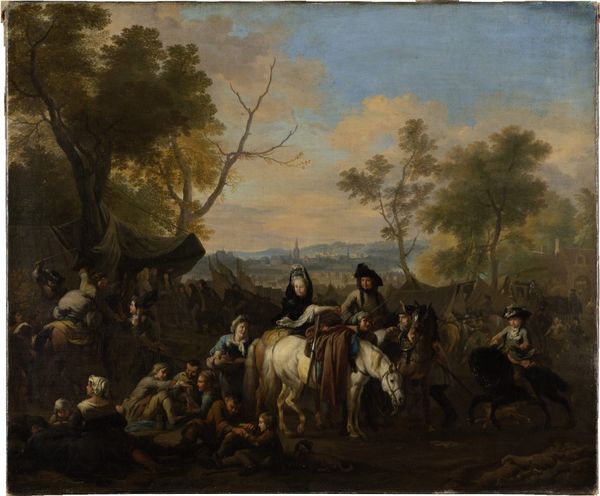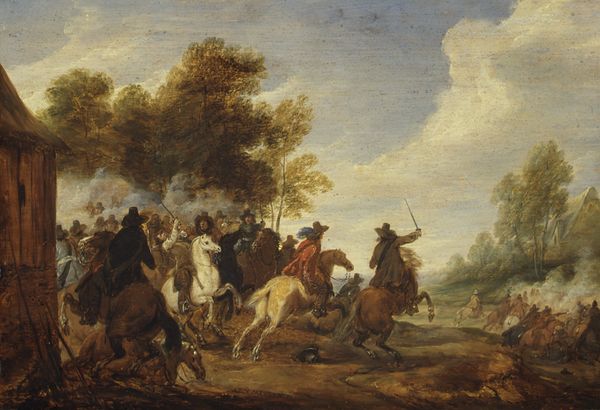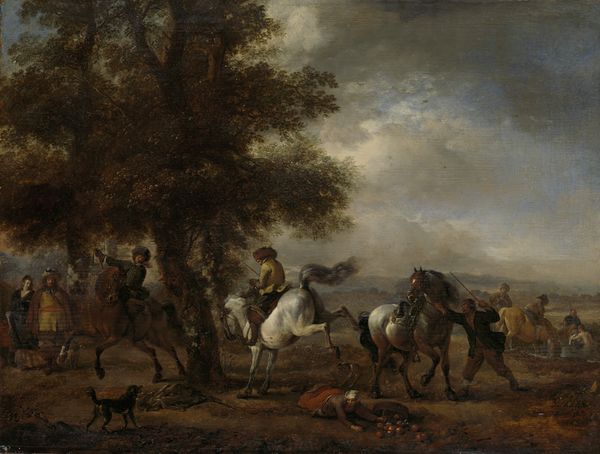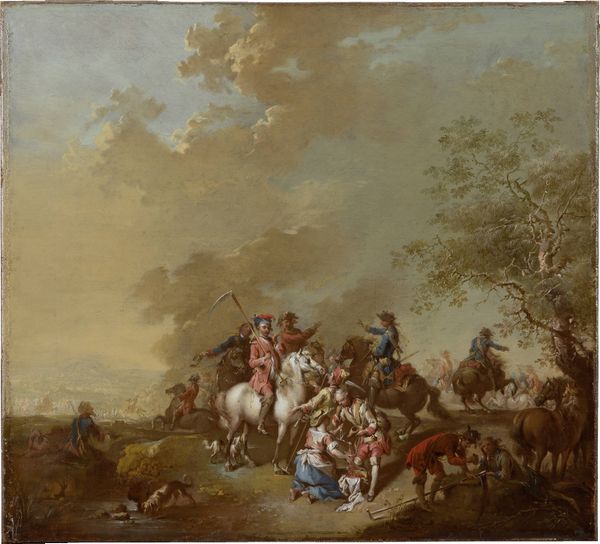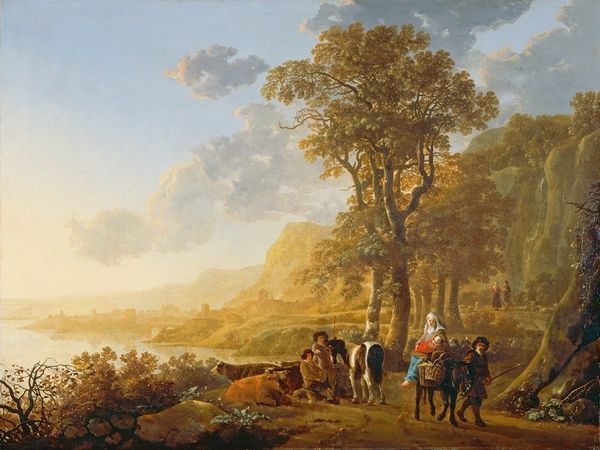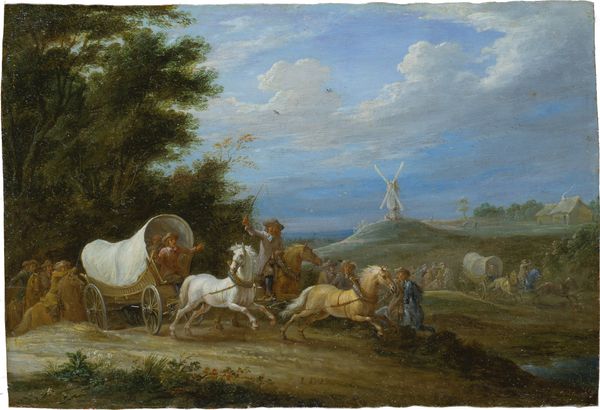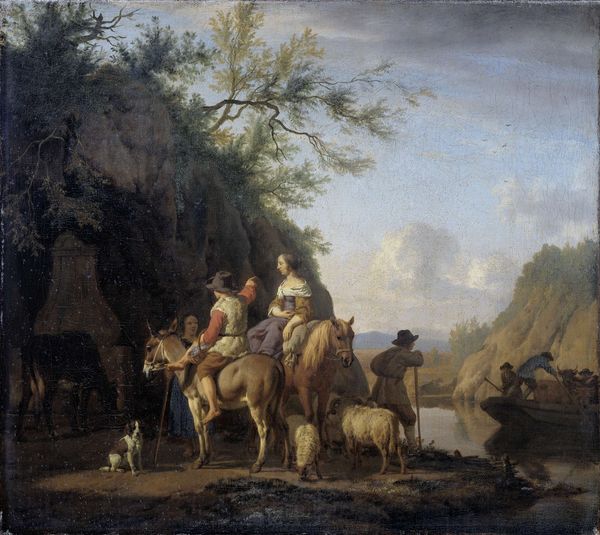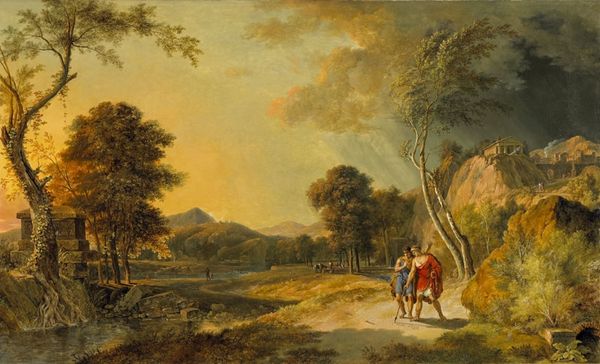
painting, oil-paint
#
portrait
#
baroque
#
painting
#
oil-paint
#
landscape
#
oil painting
#
genre-painting
#
history-painting
#
watercolor
#
realism
Copyright: Public domain
Editor: Here we have "Louis XIV en Carrosse," an oil painting attributed to Adam van der Meulen. I'm struck by the landscape; it dominates the scene, even with the grand carriage and figures. How do you read the composition of this work? Curator: Let's consider the spatial organization first. The forest to the left, depicted in darker, denser tones, creates a strong vertical anchor. Our eyes are then guided along a diagonal path, established by the procession and the arrangement of horses, toward the lighter, more open landscape on the right. Notice how the artist uses the recession into space to suggest depth, even though the detailing becomes less precise in the distance. It's a delicate balance between clarity and atmospheric perspective. Editor: So the relative clarity is guiding our eyes from left to right? Is that also why the horses are so central? Curator: Precisely. The horses, rendered with detailed musculature and varied shading, function as focal points. Van der Meulen is drawing our attention not just to the royal procession but also to the inherent power and dynamism of the horses themselves. How does that intense and precise detailing affect your reading of the atmospheric perspective overall? Editor: Now that you point it out, the precision seems less naturalistic than deliberately placed. It’s as if the detailing is functional in guiding the eye. Curator: Indeed. There's a calculated contrast between the specific and the general that underscores the formal structure of the painting. It pushes against the sense of depth it creates at the same time. Editor: That tension is fascinating. I initially saw a landscape, but it’s much more structured than it first appeared. Curator: Analyzing these compositional elements reveals how the painting's impact lies not just in its subject matter, but in the interplay of form, line and recession into depth.
Comments
No comments
Be the first to comment and join the conversation on the ultimate creative platform.
